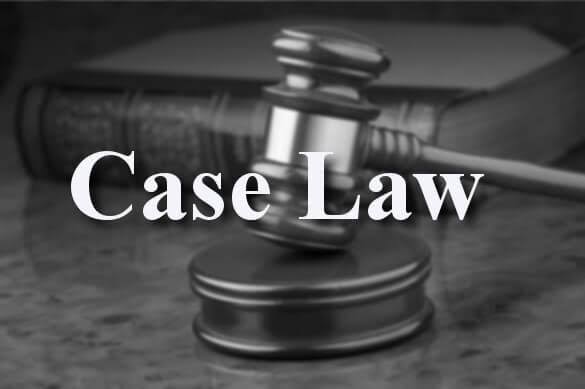Author: Anisha Parveen, Jamia Hamdard, New Delhi
To the Point
The Lliuya v. RWE AG case is a corner environmental action that signifies an implicit shift in commercial climate liability worldwide. Filed by Saúl Luciano Lliuya, a Peruvian planter, against RWE AG, Germany’s largest electricity patron, the case raises critical questions about whether companies can be held responsible for their commensurable donation to global climate change and its original impacts. This case stands as a major step in climate action by seeking commensurate responsibility from pots for their hothouse gas emigrations, indeed if the company operates in another part of the world. It paves the way for unborn international climate liability claims.
Use of Legal Jargon
Climate criterion wisdom – ways linking GHG emigrations to specific climate impacts.
Tort/ Nuisance( BGB§ 1004) – German law allowing injunctions or damages for property detriment.
International Civil Liability – Allowing foreign complainants to sue domestic defendants under public tort law.
Imminent Danger Threshold – The needed probability of detriment to detector intervention.
Pro Rata Liability – Liability commensurable to a company’s share of emigrations.
Evidentiary Phase – The stage in legal proceedings where data and expert substantiation are scanned.
The Proof
Petitioner Saúl Luciano Lliuya, Peruvian planter from Huaraz Replier RWE AG, Germany’s largest CO ₂ emitter Timeline – Filed in Essen District Court( Nov 2015) – dismissed for inadequate occasion. – Appeal admitted by Hamm Higher Regional Court( Nov 2017). – point visit to Huaraz( May 2022), evidentiary sounds. – Judgment on May 28, 2025 – appeal dismissed. In 2015, Saúl Luciano Lliuya filed an action in Germany against RWE AG, claiming that RWE’s substantial donation to global hothouse gas emigrations had increased the threat of flooding in his birthplace of Huaraz, Peru. crucial Claims RWE is one of the world’s top emitters of CO ₂. Scientific studies( including the Carbon Majors Report) trait roughly 0.47 of total literal artificial hothouse gas emigrations to RWE. Climate change caused by these emigrations accelerated glacial melting near Huaraz, significantly adding the volume of Lake Palcacocha and hanging a disastrous flood tide that could devastate Lliuya’s property. Procedural History The Essen District Court originally dismissed the case in 2016, ruling that a single company could not be held liable for the goods of climate change encyclopedically. On appeal, the Advanced Regional Court( Oberlandesgericht) of Hamm, Germany, allowed the case to do to the evidentiary stage in 2017, feting that the complainant had plausibly established an unproductive connection that demanded factual verification. This is the first time a German court honored that a private company could, in principle, be held incompletely liable for climate damages abroad.
Abstract
The Lliuya v. RWE case represents a groundbreaking attempt to hold pots fairly responsible for their share of climate change benefactions, irrespective of geographical boundaries. Unlike previous climate suits that largely targeted governments, this case directly challenges commercial responsibility in the climate extremity. It tests whether the principle of commensurable liability can be applied in international environmental detriment and whether individual emitters can be impelled to bear the cost of climate adaption measures in vulnerable regions.
Case Laws
Applicable Statutes and Legal Principles
Section 1004 of the German Civil law (BGB) Provides remedies against property contraventions. Principle of Environmental Responsibility (UNFCCC & Paris Agreement) Establishes scores to alleviate climate change. Tort Law Principles Establish the frame for compensating detriment caused by unlawful conduct.
Relative Cases
Urgenda Foundation v. State of the Netherlands( 2015) Dutch court ordered the government to reduce hothouse gas emigrations, feting the state’s duty of care. The Urgenda Foundation, a Dutch environmental group, successfully sued the State of the Netherlands to impel the government to take more aggressive action on climate change. The Dutch Supreme Court eventually upheld lower court rulings, taking the Netherlands to reduce its hothouse gas emigrations by at least 25 below 1990 situations by the end of 2020. This case, known as Urgenda Foundation v. State of the Netherlands, is notable for being one of the first successful climate change suits grounded on mortal rights arguments.
Milieudefensie v. Royal Dutch Shell( 2021) In May 2021, a Dutch court in The Hague made a corner ruling in the case of Milieudefensie( musketeers of the Earth Netherlands) v. Royal Dutch Shell. The court ordered Shell to reduce its global CO ₂ emigrations by 45 by 2030, compared to 2019 situations. This was the first time a company was fairly needed to align its programs with the pretensions of the Paris Agreement. The court set up that Shell’s benefactions to climate change posed a trouble to mortal rights, similar as the right to life and well- being. It ruled that Shell had a commercial duty of care to reduce emigrations, not just from its own operations, but also from the products it sells( like oil painting and gas). The case was a major palm for climate activists and a strong signal that big polluters can be held responsible for their part in climate change.
Lliuya vs RWE In November 2015, Saúl Luciano Lliuya, a planter from Huaraz, Peru, filed an action in the District Court of Essen, Germany, against RWE, Germany’s largest electricity company. Supported by the NGO Germanwatch, Lliuya argued that RWE had contributed to climate change by releasing large quantities of hothouse feasts( GHGs). He claimed this made RWE incompletely responsible for the melting of glaciers near Huaraz. The melting glaciers have caused the near glacial lake, Palcacocha, to grow significantly, especially since 2003, creating a serious flood tide threat for the city. Lliuya used several legal arguments, including that RWs emigrations were a nuisance that forced him to spend plutocrat on flood tide protection.
He asked the court to make RWE pay 0.47% of the total flood protection costs, matching RWE’s estimated share of global greenhouse gas emissions since 1751.
The district court rejected Luciano Lliuya’s requests for a court order and damages. It said it couldn’t offer a solution that would help him, since stopping RWE’s emissions wouldn’t change his situation. The court also said it was too difficult to directly link specific emissions to specific climate impacts.
However, on November 30, 2017, the Higher Regional Court of Hamm accepted the case as valid and allowed it to move forward to the evidence phase. In this phase, the court will investigate whether Luciano Lliuya’s home is truly at risk of flooding or mudslides due to the growing glacial lake nearby, and how much RWE’s emissions contribute to that risk. Experts will examine RWE’s emissions, their role in climate change, the effect on the nearby glacier, and how much responsibility RWE holds.
Because of the COVID-19 pandemic, planned on-site inspections have been delayed and have not yet happened. Although the case is still ongoing, the court’s decision to consider that a private company might be responsible for climate-related damages is an important step in environmental law.
After long delays, mainly due to the COVID-19 pandemic, a site visit finally took place in Huaraz, Peru, in May 2022. Judges from the Higher Regional Court of Hamm (Germany), along with experts and lawyers, visited to assess whether Luciano Lliuya’s house was at risk from flooding caused by the nearby glacial lake, Palcacocha.
On May 28, 2025, the Higher Regional Court dismissed Luciano Lliuya’s appeal. The decision is final, with no further appeal allowed. The court ruled that there was no real or serious threat to his property, which led to the case being dismissed.
However, the court’s ruling set important legal principles for future climate cases. It confirmed that large greenhouse gas emitters can, in principle, be held responsible under German law for the impacts of their emissions.
The court said that under Section 1004 of the German Civil Code, if a property faces a likely future threat, a company that contributes to CO₂ emissions could be required to take preventive action. If they refuse, they might be held liable for future costs based on their share of global emissions.
The court also made clear that the physical distance between the polluter and the affected property (in this case, from Germany to Peru) does not automatically make such claims invalid. The judge rejected the idea that this would lead to unlimited lawsuits against small emitters, pointing out that individual emissions are usually too small to create liability. Also, RWE’s role as a public utility does not protect it from such claims abroad.
In the end, the appeal was dismissed because the evidence showed that the risk to Luciano Lliuya’s home was very low. Experts estimated there was only about a 1% chance of flooding in the next 30 years. Even if a flood did happen, the water would likely be shallow and slow-moving, causing no serious damage to the house.
Conclusion
The Lliuya v. RWE case is a turning point in corporate climate accountability. It demonstrates that climate change is no longer just a policy issue—it is now a matter of enforceable legal rights and responsibilities. If successful, it could establish a global precedent that high-emitting corporations can be proportionally liable for climate-related damages worldwide.
While the case is still ongoing, its progression has already influenced climate jurisprudence by opening the door for similar lawsuits against other carbon majors. The case underscores the evolving landscape of climate justice where the boundaries of legal liability are being expanded to meet the challenges of the climate crisis.
FAQs
Q1. Why was this case significant?
A: It was the first high‑court ruling affirming under civil law that corporations can be held liable for climate-related harm caused by their emissions—even across borders.
Q2. Why did Lliuya’s claim fail?
A: Expert evidence showed only a 1% chance of flood over 30 years to his property—below the legal ‘imminent danger’ threshold.
Q3. Does this set a precedent?
A: Yes—while not binding precedent, it provides a powerful persuasive framework for global climate litigation.
Q4. What legal tests were applied?
A: The court required both imminent danger and proportional causation based on emissions share.
Q5. What comes next?
A: Future claimants can bring similar cases with stronger evidence of risk. Related cases are pending in Switzerland, Belgium, and elsewhere.
Q6. What does the plaintiff seek?
A: Saúl Luciano Lliuya seeks compensation for approximately €17,000, which would cover his share of flood protection costs based on RWE’s historical emission contribution.
Reference
1 Urgenda Foundation v. State of the Netherlands
Climate
Change
Litigation
https://share.google/uCIBuXwA6406Nwvq7
2 Milieudefensie et al. v. Royal Dutch Shell plc. –
Climate
Change
Litigation
https://share.google/t3vFiLXWGBEmG25Mo
3 Luciano Lliuya v. RWE AG Climate Change Litigation
https://climatecasechart.com/non-us-case/lliuya-v-r
we-ag/





